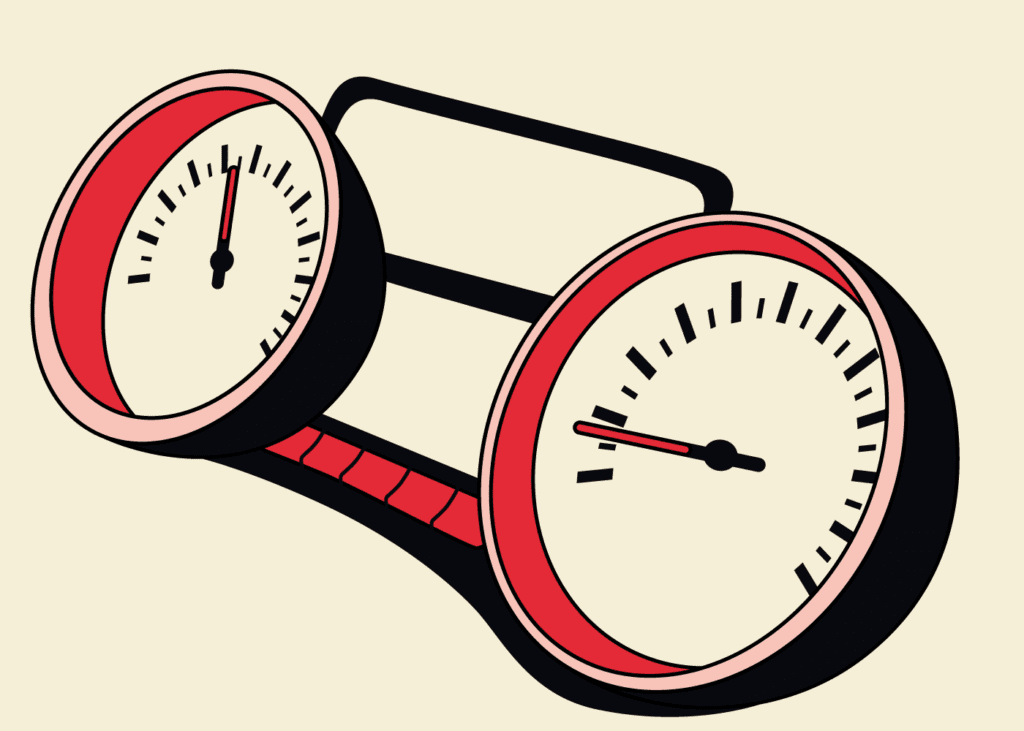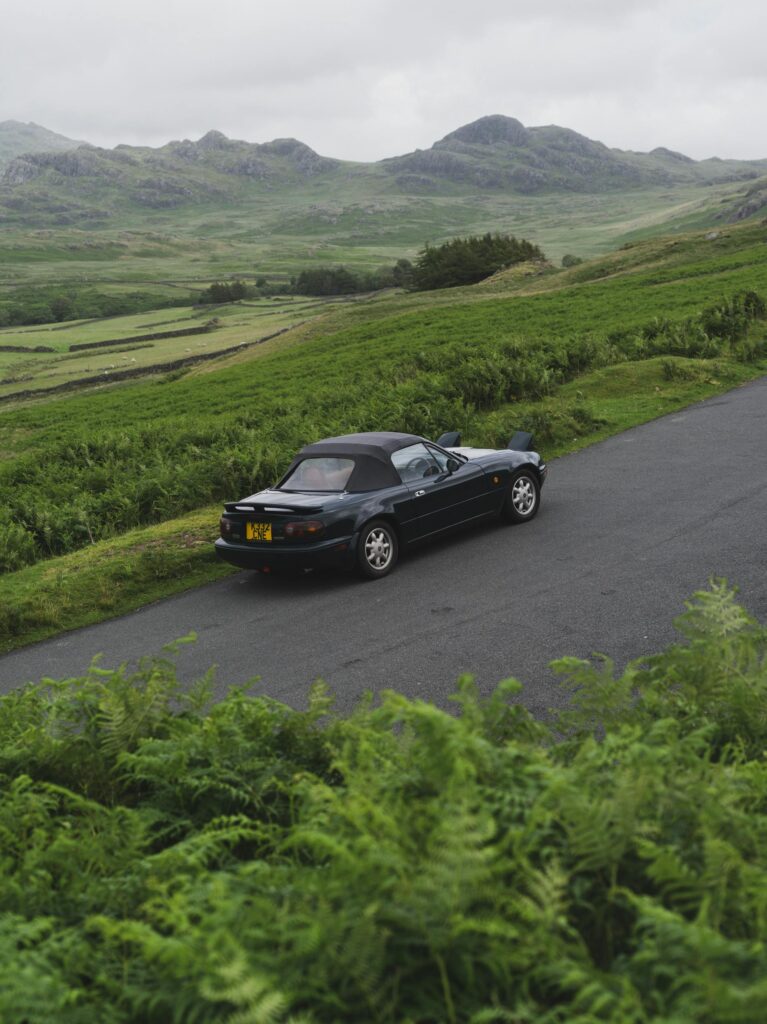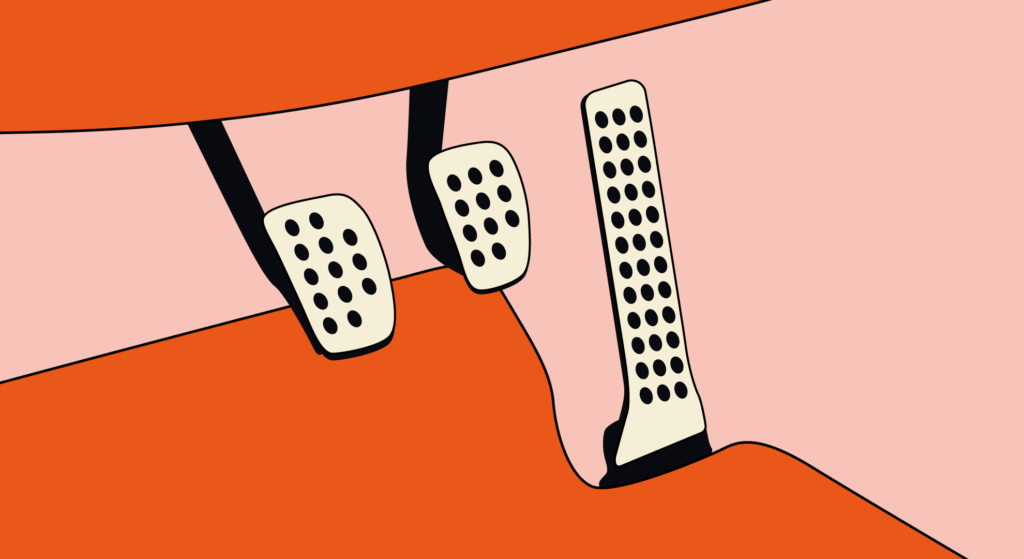The clutch is a critical component that connects the engine to the transmission, allowing the driver to smoothly shift gears and control the power transfer. Good clutch control is a prerequisite driving skill that you will need to master.
This guide provides nine tips to improve your clutch control and your overall driving skills and answers some of you frequently asked questions on the subject.
What is clutch control? Understanding the basics
Before delving into tips, it’s crucial to have a basic understanding of how the clutch works. In a manual transmission, the clutch pedal is used to disengage the engine from the gearbox, enabling you to shift gears.

When you press the clutch pedal, the clutch disc separates from the flywheel, interrupting the power flow. Releasing the pedal gradually re-engages the clutch, allowing power to transfer smoothly. Good control will result in a smooth driving experience.
1. Find the biting point
One of the fundamental aspects of clutch control is finding the “biting point” or the point at which the clutch engages. This is the moment when it starts to transmit power from the engine to the transmission.
To find the biting point, practice engaging the clutch slowly until you feel a slight resistance, and the engine RPM (revolutions per minute) drops slightly. Becoming familiar with this point is crucial for smooth starts and gear changes.
2. Pulling away smoothly
Achieving smooth starts is a key aspect of mastering clutch control. To avoid jerky movements, apply steady pressure on the accelerator while gradually releasing the clutch.
Use a combination of muscle memory and awareness of the bite point to ensure a smooth transition from a stationary position to motion. Practice in an empty car park or a quiet street to build confidence in controlling the clutch during starts.
3. Rev-matching
Rev-matching is a technique used during downshifting to synchronise the engine speed with the speed of the lower gear. This helps to prevent jerky movements and excessive wear on the clutch. To rev-match, blip the throttle while simultaneously pressing the clutch and shifting to a lower gear. This ensures a smooth transition between gears and enhances overall driving comfort.
4. Don’t ‘ride’ the clutch
“Riding the clutch” refers to keeping the foot on the clutch pedal for an extended period, causing unnecessary wear and tear. Only press the pedal when shifting gears or coming to a stop.
When driving, keep your foot off the clutch to allow the components to disengage fully, reducing heat and prolonging the life of the mechanism
5. Uphill and downhill driving

Mastering clutch control on inclines is crucial for a confident driving experience.
Good control on a hill is combined with your handbrake. On an uphill slope, engage the handbrake to prevent rollback. Release the handbrake while smoothly engaging the clutch and applying the accelerator.
On downhill slopes, use engine braking by downshifting to a lower gear, reducing the reliance on the foot brake.
6. Clutch control in slow moving traffic
Keep the clutch in the bite point area, which is the area between the fully depressed and fully released positions. This allows you to move the car forward slowly without stalling. You probably won’t even need to use the accelerator when creeping forward at such a slow speed.
7. Clutch control at junctions
Approach slowly, shift to a lower gear, and gently depress the clutch while braking. Hold the clutch at the biting point to maintain control. Assess the traffic flow and release the clutch smoothly to accelerate.
Practise anticipatory movements to minimise stopping, ensuring a seamless transition at junctions and enhancing overall driving comfort and safety.
8. Clutch control at roundabouts

As you approach, engage the clutch to slow down, downshift if necessary, and release gradually when accelerating. This ensures seamless transitions between gears, preventing jerky movements.
Maintaining a balanced control enhances overall vehicle control, reduces wear on the transmission, and promotes a safer driving experience, especially in traffic-heavy roundabout scenarios.
9. How to practise clutch control without the engine running
It is difficult to practise clutch control without a car, but the car doesn’t necessarily need to have its engine running.
Find a quiet space and sit in a stationary car with the engine off. Familiarise yourself with the clutch pedal’s resistance and practise smoothly engaging and disengaging it. Imagine shifting gears and co-ordinating with the accelerator.
This mental rehearsal helps build muscle memory and coordination, enhancing your clutch control skills when you eventually drive.
How long does it take to learn clutch control?
Two to three sessions with an experienced teacher are usually sufficient time in which to learn how to control the clutch.
That’s not to say that occasionally you won’t stall the engine or kangaroo along the road. We all have lapses, but generally speaking, you should have mastered the clutch and learned how to drive smoothly after a handful of lessons.
What is the best footwear for driving in?

When it comes to driving a manual car, choosing the right footwear is crucial for safety and control. The best shoes for this task are those that offer a balance between comfort, grip, and precision. Flip flops, with their flimsy structure and lack of support, can be hazardous, potentially slipping off during crucial moments.
High heels, on the other hand, compromise the driver’s ability to apply consistent pressure on the pedals due to their elevation. Bare feet may lack the necessary traction and protection.
Optimal driving shoes include flat, flexible soles that allow for better pedal feel and quick manoeuvring. Trainers or shoes designed with a low profile and adequate grip are ideal. They provide the necessary support and sensitivity required for precise pedal control, ensuring a safe and enjoyable manual driving experience.
Choosing the right footwear is a small yet significant step towards enhancing your safety and enjoying a smoother driving experience.
Find out which cars are the best for learner drivers here.
Make sure you have the right learner driver insurance in place
Adrian Flux offers flexible learner driver insurance which can be purchased annually, monthly or daily, depending on your needs. Prices start from 65p a day.
